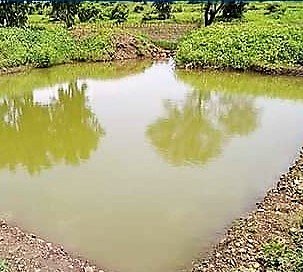Haryana is a prosperous state of India, known for its developed farming and agro industry. The region is highly dependent on agriculture. But sadly the region of Narnaul in Mahendragarh, Haryana, has a fast-depleting groundwater level, affecting and raising concern about the livelihoods. Sehgal Foundation in partnership with HDFC Bank under Corporate Social Responsibility – CSR decided to bring about positive changes to the region with Parivartan Pariyojana (campaign for change), a project that aims to augment the water table by renovating redundant ponds (johads) in villages Sareli and Panchnota.
Sehgal Foundation’s Water Management Program works on both water conservation and water management with communities to harvest and store rainwater for direct use, and/or replenish groundwater by building and restoring infrastructure in villages. It supports revival of traditional water bodies, construction of water storage infrastructure, and safe disposal of wastewater.
“The johad has eased our lives. Earlier, we had to wait for four or five hours for the tankers. Even our livestock stayed without water for long spells, causing ill health and reduced milk production,” says panch Sarita Devi of village Panchnota.
Two to three hours of rain are enough for the pond to overflow with ample water to sustain villagers for almost a year. With construction of this pond, the groundwater level has increased. The diameter and depth of the johad is substantially increased to collect maximum rainwater for a longer duration, so as to retain as much water even after the evaporation due to the summer heat of Haryana. The boundary of the pond is stronger than before and can contain enough water to last until the following monsoon. With more water available in the pond, ground seepage is recharging the water table of the area.
The results can be seen in the adjacent village as well with fuller wells. More than ten wells are feeding more individuals than it could before the renovation of the johad. Prior to this, the wells had water less than 100 feet; now the water level has increased by 50 feet.
The conditions of village Sareli were also difficult because it is disconnected from the town and between the Aravalli hills, so rainwater failed to recharge the ground. The runoff to the plains kept the region dry and villagers desperate for more rain. With the restored pond, water rests at the foothills, percolates into the ground, and feeds the water table. Subsequently, the water level of wells in the adjoining area increases as well.
Villagers in Panchnota and Sareli are relieved to have more water available now. Having faced such scarcity, they feel more aware and confident about water management and effective water usage. Local livelihoods have been uplifted and balanced over the last year. Their reliance on external sources of water has been reduced along with their time, money, and constant worry about future sustenance. These two johad structures will continue to feed the water table for years to come, a much-needed parivartan.





